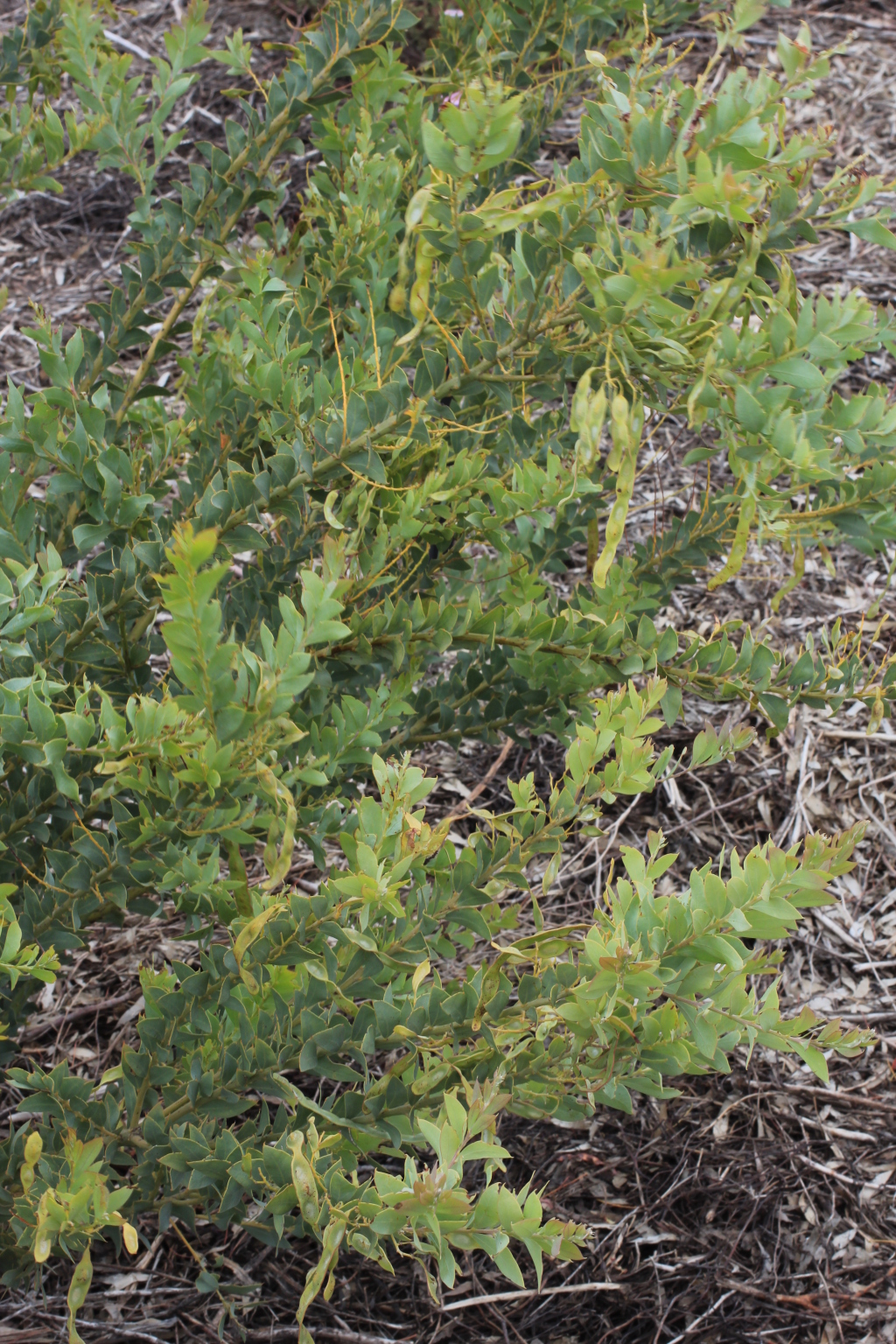Acacia cultriformis
A.Cunn. ex G.DonErect or spreading shrub to 4 m high; branches sometimes weeping; branchlets terete or angled, glabrous, sometimes pruinose. Phyllodes crowded, on short stem projections, more or less triangular, adaxial margin conspicuously rounded with the proximal edge more or less parallel to branchlet, 10–30 mm long, 5–15 mm wide, grey-green to glaucous, glabrous, mucronate; midrib prominent, lateral veins obscure; gland prominent, 8–15 mm above base. Racemes prolific in upper axils, rachis usually 1–8 cm long, glabrous; peduncles 2.5–5 mm long, glabrous; heads globular to shortly cylindrical, 13–40-flowered, bright golden. Flowers 5-merous; sepals united. Pods narrowly oblong, to c. 9 cm long, 5–8 mm wide, raised over seeds, firmly chartaceous, glabrous, often pruinose; seeds longitudinal, oblong, 3.5–4.5 mm long, dull to shiny, black, aril clavate.
VVP, VRiv, GipP, GGr, DunT, EGL, HNF, Strz. Native to New South Wales and south-eastern Queensland, occasionally escaping cultivation in Victoria.
A variable species in phyllode and inflorescence shape and may contain 2 subspecies. The cultivar ‘Austraflora Cascade’ is commonly grown in horticulture as a ground cover, due to its pendulous, spreading habit, with plants reaching c. 0.3 m high and 4 m wide.
 Spinning
Spinning

